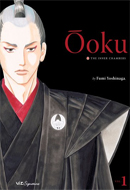   |
Manga-ka: Fumi Yoshinaga
Publisher: Viz Media
Rating: Older Teen (16+)
Release Date: August 2009
Synopsis: “In Edo period Japan, a strange new disease called the Redface Pox has begun to prey on the country’s men. Within eighty years of the first outbreak, the male population has fallen by seventy-five percent. Women have taken on all the roles traditionally granted to men, even that of the shogun. The men, precious providers of life, are carefully protected. And the most beautiful of the men are sent to serve in the shogun’s Inner Chamber…”
Ooku begins with the first victim of a deadly plague to hit feudal Japan. This disease, spreading quickly over the entire country, affects only young men and swiftly sees the death of over seventy-five percent of the male population. Little time is spent dwelling on this progression period and the story fast forwards almost a century ahead. Here readers are introduced to a world where women have taken over roles originally held by men, including a country under rule by a female Shogun with a house of well-bred men at her service.
The bulk of the story follows individuals’ experiences within the Ooku: the Shogun’s in-house harem. The attention of the story lays predominantly on the men within the Ooku with special attention to a select few, in particular one new to the group, Yunoshin. Through his initiation into the fold, readers learn not only more about the society that fueled the creation of such a system but also the inner personal workings of the group. Not every face is a friendly one and agendas clash, especially for a newcomer facing some near-disturbingly rough ‘initiation’; not to mention the cruel fates he learns of those who serve the Ooku’s true purpose. Yunoshin’s journey into the sanctum, and the subsequent trials he faces, act as strong character-driven exposition of the story as a whole.
Though much of Ooku follows everything from a very individual perspective, by the end of the book there’s also the inkling of a plot that goes a little deeper. Curious about the customs around them, the current Shogun looks to old scripture for explanation on why so many of today’s traditions call back to a day when men were apparently in positions of rule and the creation of the Ooku.
This aspect of the female Shogun ties directly to one of the things about the plot that left me feeling a tad unsatisfied – the biased-nature of the story’s viewpoint in its focus on the men. Though it’s an intentional choice on the writer’s part, I would’ve loved to read the story from a more feminine angle considering we’re reading about a world where women are now doing the physical labour and governing the people. I’d love to learn more about how Yoshinaga perceives their societal attitude as a whole: how do most women now view the men and how do they take to the change in demands both physical and political on this new generation; this along with more on the structure of family succession now that its women taking on households instead of males. While that isn’t to say I don’t find it interesting reading about the men from a harem point-of-view, far from it, there’s still an entire other side to the world that could’ve been very engagingly explored instead of merely touched on.
Fumi Yoshinaga’s storytelling here also feels less effective than her other. With some very wordy pages and a slow moving plot, I was left wishing she’d have spent less time having characters tell us what they were thinking and doing and really show us instead. This kind of silent depiction is always what I’ve found so enchanting about the author’s prior work, but here in Ooku, I just didn’t find that same captivation. There was still a definitive charm to be found in individual scenes but these short and memorable exchanges felt lost in a sea of those much less engaging.
What really got me about Ooku however was the Viz rewrite. I’ve never really had a problem with any of Viz’s rewrites and more often than not I can see why they make the occasional hard editorial decisions they must to best serve the book. Yet that said, here in Ooku I have to firmly disagree with their decision.
In an attempt to garner the book a more time-relevant atmosphere, the dialogue is given a very sharp old-English dialect. Thou, thy, mettle, nay, forsoth – these are just some of the words you’ll find used heavily throughout the book. The text completely alienates itself from the context of the story, because though it certainly reads ‘old’, it reads English – very English. I felt like I was reading watered-down Shakespeare when I was actually reading Ooku, a Japanese historical-era drama. Though aware that there will always be cultural points that can’t fully cross the translation border, this was sadly both overdone and unnecessary. Perhaps most disappointing of all, I now honestly can’t tell if Ooku is meant to be as cheesy as some parts read or if these moments merely fell victim to the localization’s faults. It’s a poor editorial choice and I hope to see this handled with more care in future volumes, though aware that for consistencies sake we probably won’t see such an alteration mid-series.
At least the physical nature of the book was handled with more as-it-is charm, nicely packaged in a slick black faux-slip cover and larger trim size. It’s an attractive book, and classy looking at that, both lightweight and sturdy. With such nicely handled publication work on the physical side of things, it does become all the more disappointing that the adaption is such a soil.
Ooku isn’t Fumi Yoshinaga’s best work, and Viz’s messy verbal execution garnered it no help, but the plot alone manages to be a worthy continuing feature when deftly held in the hands of a creator so known for her poignant character drama. There’s some suspended belief required, and a bit of patience, but underneath some ambiguity and a stuffy overcoat of Westernized-speech there’s still entertainment to be had in this ingeniously flipped balance of the sexes. Because the parts that are good are well worth getting through those that are not, and my good faith from Yoshinaga’s past work, I’m looking forward to seeing the story continue in volume two and am curious to know which direction it will take – more of the same or a different approach now that the foundation has been laid.
Review written July 28, 2009 by Lissa Pattillo
Book purchased from Chapters


 Follow
Follow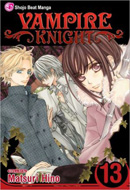
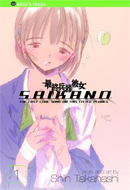
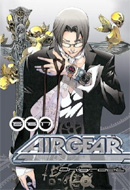
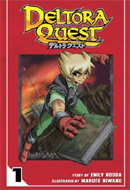





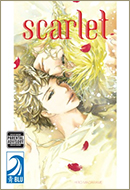








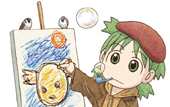









Translation is tricky work. It's hard enough to properly localize works, and I suspect using Middle English only adds to the difficulty. Was the use of English at least proficient, or was it a random transformation of words into archaic form?
I’m no expert on the subject but I know I tripped up a lot trying to read through the lines in Ooku. I had to stop and reread more than a few times to really get the whole paragraph. I think it suffered from not being consistent enough so the archaic form didn’t flow together – a very uneven read.
[…] Maniac Cafe) Bill Sherman on vol. 1 of My Darling! Miss Bancho (Blogcritics) Lissa Pattillo on vol. 1 of Ooku: The Inner Chambers (Kuriousity) James Fleenor on vol. 1 of Red Hot Chili Samurai (Anime Sentinel) Kate Dacey on […]
Your take on the book was pretty much the same as mine. It’s a great concept, but the execution doesn’t play to Yoshinaga’s strengths and the Shakespearean words thrown in seemingly at random.
I’ll read volume 2 if I can get it at the library, but I don’t think I’ll own it.